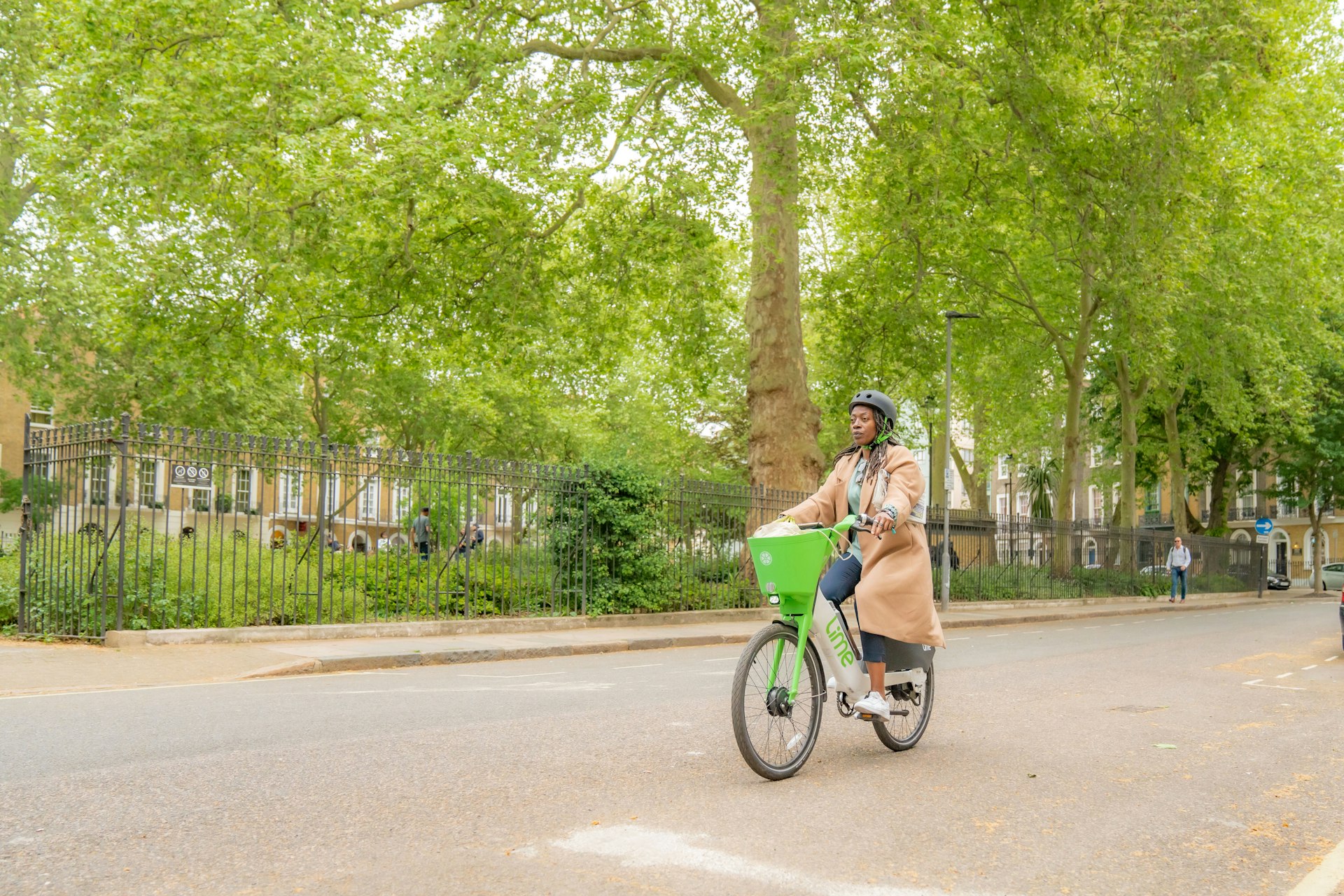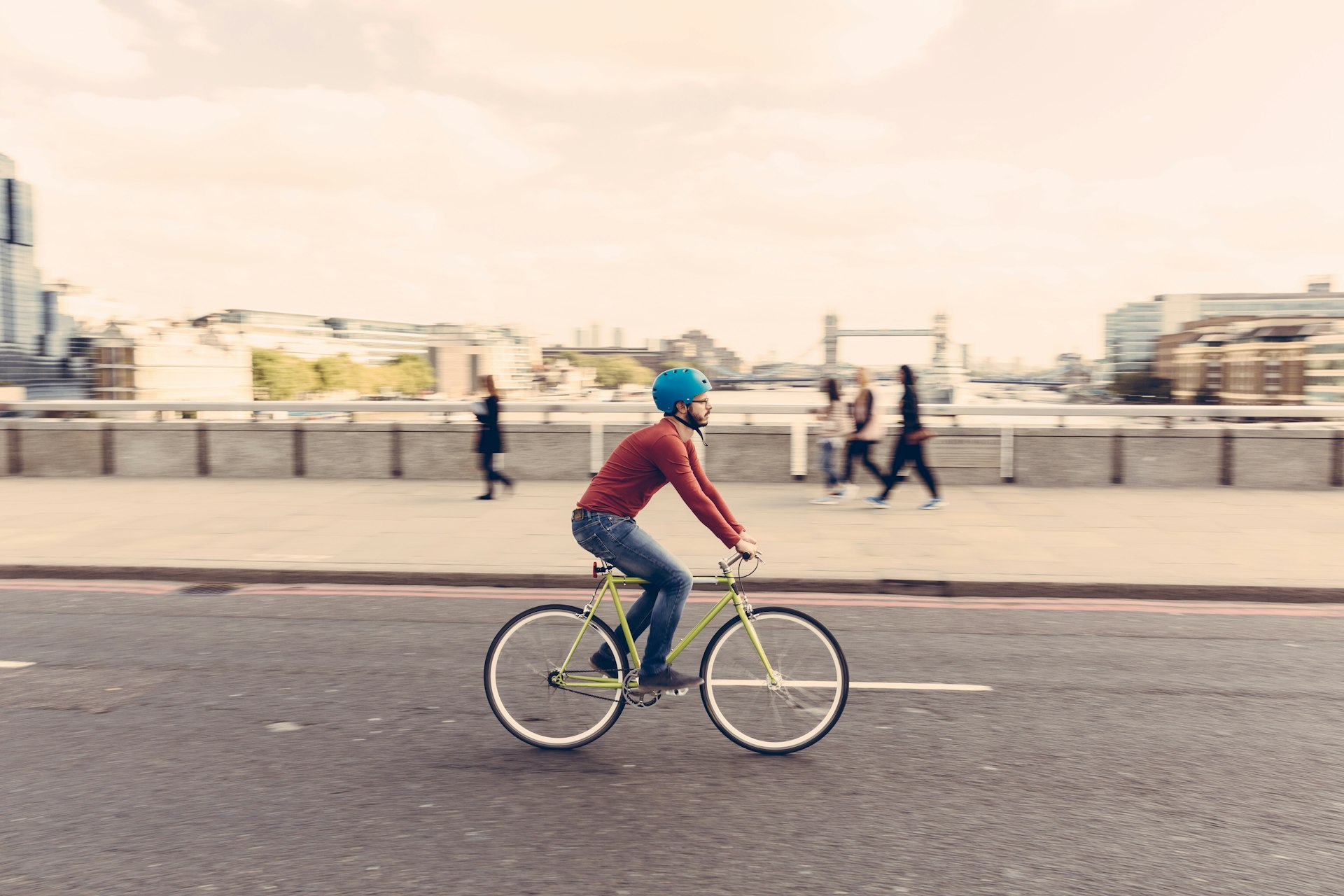One of the best ways to get around the city is on foot – however if you want to go further and see more, you should really consider renting a bike.
In this series, Lonely Planet’s team of writers and editors answer your travel woes and provide tips and hacks to help you plan a hassle-free trip. We put a reader’s question about cycling in London to Tasmin Wabi, who has ditched the tube in favor of getting around the city on a rental bike.
Question: I love cycling but I’ve heard mixed things about the cycling culture in London. Will I be safe?
Tasmin Wabi: If you’re only in London for a short time, we don’t recommend spending all your time on the Tube going from place to place on the Underground. One of the best ways to get around the city is on foot – however if you want to go further and see more, you should really consider renting a bike. There are a number of bicycle rental schemes in London to choose from. TIER And Dr; Read more about the three most used ones: Santander, lemon And The human forest).

How can I rent a bike to get around London?
If you want to ride a bike, you have several options in inner London.
Santander Cycle is the cheapest option.
At £1.65 ($2) for every 30-minute ride, Santander cycle are the cheapest option. Might be worth it if you’re staying for a while. Downloading app. and paying £20 for unlimited rides (up to 60 minutes each) for a month. Santander also rents e-bikes, with a growing fleet.
One such bike share program is now found in cities all over the world, Santander bikes are rented and returned to docked stations dotted around the city. You can rent a bicycle for a single ride by following the checkout process at the kiosk in front of each dock.
Planning Advice: With over 12,000 bikes at almost 800 docking stations across London, you likely won’t have much trouble finding one. That said, at peak times (mid-Sun weekend or around 5pm to 7pm on weekdays) you may have to walk further to find an available bike and get back. You may have to cycle to find a place. Check docking station availability. App Or Google Maps.

Lime e-bikes are everywhere in London.
Based in USA lemonE-bikes really took off in London in 2022. app (for iOS And Android) are easy to use, and these pedal-assisted, dockless e-bikes can be parked anywhere.
To end the ride you just snap a photo to show you’ve parked your e-bike somewhere safe and pedestrian-friendly. In some London boroughs, you need to park within specific spaces (noted in the app). The cost adds up on longer journeys, though: after the initial £1 opening fee, it’s £0.23 per minute, making a 30-minute ride around £8.
The first time you ride an e-bike, the initial kick when you first get up to speed can be surprising: make sure the brakes are working properly, and use them almost immediately. Be prepared for Limebikes are speed limited to 14.8mph (which is fast in a busy city like London), a rate limited (electronically) in quieter areas like parks.
Planning Advice: Unlike Santander bicycles, the Lyme bike’s front baskets do not have straps to hold coats and bags. So don’t leave anything in there that will fly away as you accelerate.
The Human Forest is an ethical e-bike alternative.
A London-based company The human forest ensures that the battery of each of its e-bikes is charged with renewable energy. What’s more, rental fees are low: the first 10 minutes per day are free, then it’s £0.19 per minute and finally a £0.50 parking charge. Another bonus for Human Forest e-bikes is the available “mint bundles”. A £10 bundle gets you a total of three hours of riding a day. The Daily Explorer Bundle (£15) allows eight hours within 24 hours – the perfect offer to see a huge swath of London on just two wheels.
Planning Advice: The human forest is not very vast. London coverage Yet if you park “outside the forest” you will have to pay an additional parking charge (£2).

Is it safe to cycle in London?
London is relatively flat, particularly in the central areas near the Thames, making cycling accessible to riders of all fitness and experience levels. Moreover, over the last decade there has been a concerted effort to make London more cyclist-friendly. “Dedicated Bike Lanes”Cycle superhighways” are often separated from traffic, with road markings as well as well-demarcated cycleways. Safer and quieter backstreets for cycling are mapped and usually signposted, such as “Ways of silenceI recommend downloading. City Mapperwhich offers three ways to configure cycle routes: quiet, regular or fast.
As with driving and walking, it is impossible to eliminate all risks with cycling. Yet cycling is becoming safer with each passing year, and most journeys around London are pure joy. You’ll feel the breeze on your face as you walk through London’s diverse architecture, historic cobbled lanes and stunning green spaces.

Tips for safe cycling in London
Publishes proposals for Transport for London (TfL). Safe cycling in London. Some are fairly standard (always pay attention, wear a helmet, etc.) but others are useful for non-European cyclists in London.
First, never ride a bicycle on the sidewalk. Not only are you not allowed to, London mobsters can abuse you (or worse) if you stop (remember that accidents often happen when cyclists move from pavement to road happens). If there is no other option, get off and walk along the sidewalk.
Second, stay centered on narrow streets. You might think you’re doing the right thing by pulling over to let cars pass you, but it can actually be more dangerous – especially if you hit a pothole or a pedestrian in your path. Need to turn to avoid being stepped on.
Walking through the narrow streets, ignore any cars following you: as most of London’s streets are small and narrow, you won’t hold up an impatient driver for long. The driving speed limit is only 20 mph, yet if someone is really tailgating you, pull over and let them pass as soon as there is room.

Things to keep in mind while cycling in London
You’d think those double-decker red buses would be the biggest threat to London cyclists – but in my experience, bus drivers are usually always aware and usually pass with plenty of room. Cycling is expected in the bus lane. Still, if a bus signals that it’s pulling out of a stop, back off. They are running on a tight timetable and will not wait for you to pass.
Keep your eyes peeled for potential collisions at all times. In particular, give trucks – with their wide turning radius and large blind spots – plenty of berth. Dangerous intersections are also a major concern for cyclists. Holborn It should be avoided if you can, as well as the major roads around Kings Cross and Euston.
In high-traffic areas, bike lanes can be very busy at peak times – and some commuters feel like they’re training for the Tour de France. Keep to a slow and steady pace, and make eye contact with other cyclists (plus walkers and drivers) to make sure you’re seen.
The paths along Regent’s Canal and other waterways may seem like a nice place to ride away from car traffic, but in reality the mix of oncoming cyclists, dog walkers and groups of pedestrians makes it more than just riding on the road. Can be slow and stressful.
